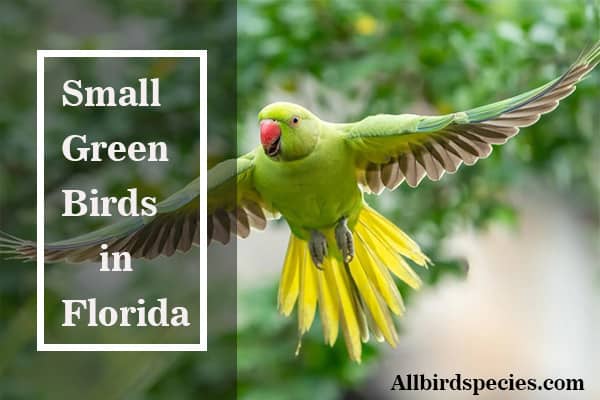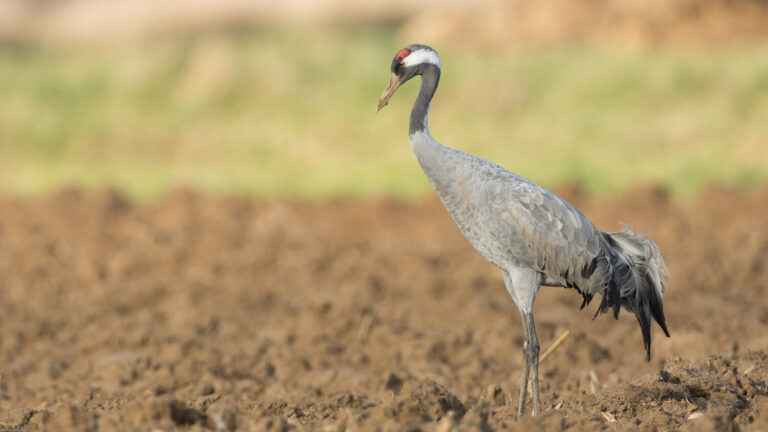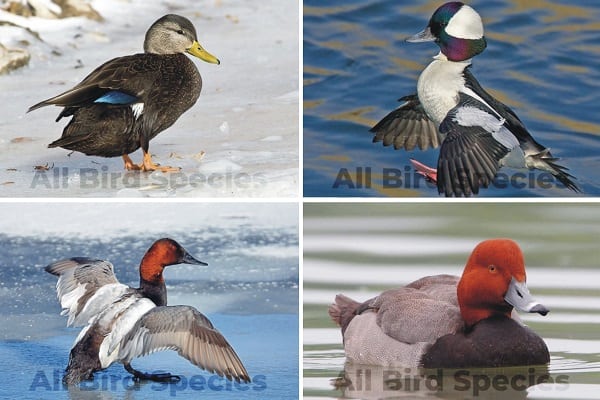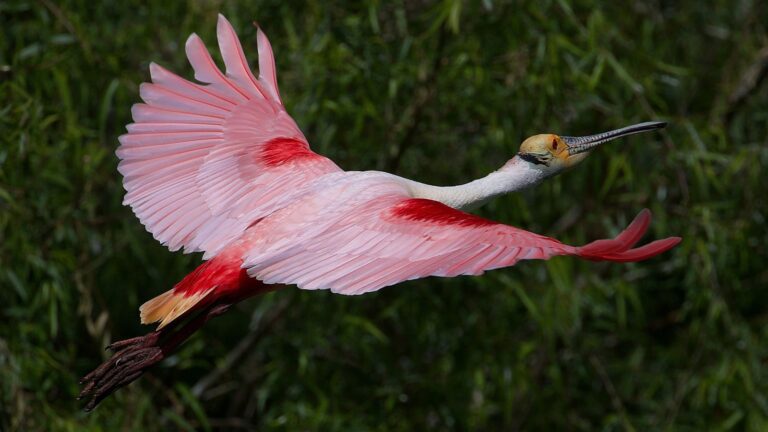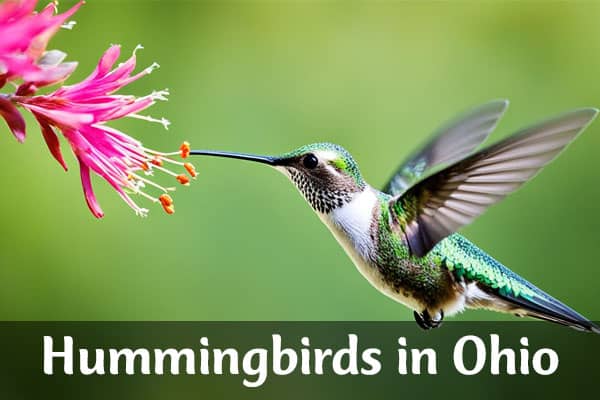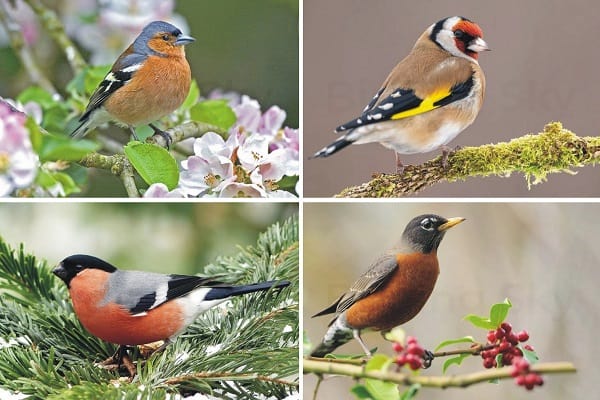13 Species Small Green Birds in Florida (Pictures)
I’ve researched small green birds in Florida, and they are fascinating creatures. Their vibrant colours and unique behaviours make them stand out in the lush landscapes. From the enchanting calls to their playful antics, these birds captivate anyone lucky enough to spot them. I’ll share what I discovered about their habitats and habits. Whether you’re a birdwatching enthusiast or just curious, you’ll find something to love. Let’s dive into the world of these charming avians!
Why are Small Green Birds Important?
Small green birds are key to keeping our world balanced. They help plants grow by spreading seeds and pollinating, boosting biodiversity and making our ecosystems strong and diverse.
Without these birds, many plants would struggle to grow. This would hurt other animals that need these plants for food and shelter.
These birds also show us how healthy our environments are. Changes in their numbers warn us of problems. Watching small green birds helps us understand our ecosystems better.
Protecting these birds is vital for our planet’s health. Losing their homes and facing dangers hurts their numbers. Helping them keeps our ecosystems thriving, benefiting all living things.
Common Small Green Birds in Florida
Florida is full of small green birds. Each one is special and fun to watch. Birds like the Mitred Parakeet, Monk Parakeet, and Green Heron are very colourful and active.
Spotting these birds is easier with a good eye. The Mitred Parakeet has bright green feathers and a red forehead. The Monk Parakeet is green but known for its loud calls.
The Green Heron is great at fishing and is often seen near water. It’s small and green, making it a joy to find. These birds are important for Florida’s nature.
Learning about these birds makes birdwatching better. You’ll appreciate the small green birds in Florida more.
| Bird Species | Distinctive Features | Habitat |
|---|---|---|
| Mitred Parakeet | Bright green body, red forehead | Wooded areas, urban parks |
| Monk Parakeet | Social behaviour, green and grey plumage | Open fields, city areas |
| Green Heron | Small size, greenish feathers | Wetlands, riverbank habitats |
Identifying Characteristics of Small Green Birds
Identifying small green birds in Florida needs careful attention to their features. These birds have unique physical traits that make them easy to spot. For example, their feathers can be bright lime green or darker olive.
The shape of their beaks also varies, which affects how they eat. Size differences help distinguish one bird from another. These traits help us understand the many species in the area.
Behavioural traits are also key in identifying these birds. Their eating habits can tell us which species they are. Some birds eat seeds, while others hunt insects.
Another clue is how birds live together. Some birds like to be in groups, while others prefer to be alone. Knowing these behaviours makes birdwatching more fun and helps us identify the different small green birds in Florida.
1. Green Heron
- Scientific Name: Butorides virescens
- Size: 55–65 cm (21.5–25.5 in)
- Weight: 200–500 g (7.1–17.6 oz)
- Lifespan: Up to 15 years in the wild
- Diet: Primarily fish, amphibians, and small invertebrates.
The Green Heron is a bird that catches the eye. It’s great at hiding and hunting, and knowing about its looks and where it lives makes watching it more fun.
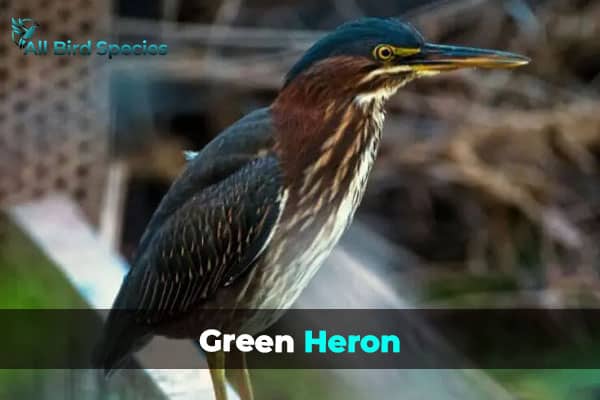
Physical Description
The Green Heron has a long, sharp bill that helps it catch food. Its back is a cool gray-green color, perfect for hiding in wetlands. Adults are 18-24 inches long, with a wingspan up to 30 inches. Young birds are brown but turn green as they grow up.
Habitat and Behavior
Green Herons live in wet places like marshes and ponds. Also, They have lots of food to eat. They are very good at hunting and use tricks to catch fish and frogs.
They even use tools like dropping bait to catch fish. This shows how smart they are.
| Feature | Description |
|---|---|
| Bill | Long and dagger-like, ideal for catching prey |
| Colouration | Gray-green back, white neck, and chestnut-coloured underparts |
| Size | 18-24 inches in length |
| Habitat | Wetlands, marshes, and lake edges |
| Behaviour | Ambush hunting and tool use for fishing |
2. Mitred Parakeet
- Scientific Name: Psittacara mitratus
- Size: 28–30 cm (11–12 in)
- Weight: 120–150 g (4.2–5.3 oz)
- Lifespan: Up to 30 years in captivity
- Diet: Primarily seeds, fruits, and nuts.
The Mitred Parakeet is known for its bright colours and friendly nature. It’s a joy to watch for bird lovers. You can spot this bird with some easy tips and by knowing how it eats and acts with others.

Identification Tips
Look for the Mitred Parakeet’s bright green body and red forehead markings. It also has a black crown. Here are some key features to look for:
- Size: About 10 inches long.
- Colour: Green with red and blue spots.
- Shape: Long tail and slender body.
These traits help tell the Mitred Parakeet apart from other parakeets.
Feeding Habits
The Mitred Parakeet eats a variety of foods. It loves:
- Fruits: Berries and apples are favourites.
- Seeds: Sunflower and millet seeds are good choices.
- Nuts: Almonds and walnuts are treats sometimes.
Its eating habits show how it interacts with other birds. It also shows how it adapts to what’s available locally.
| Identification Feature | Description |
|---|---|
| Colour | Vibrant green with red and blue markings |
| Size | Approximately 10 inches long |
| Behaviour | Highly sociable and often seen in flocks |
| Diet | Fruits, seeds, and nuts |
3. Monk Parakeet
- Scientific Name: Myiopsitta monachus
- Size: 29–30 cm (11–12 in)
- Weight: 80–150 g (2.8–5.3 oz)
- Lifespan: Up to 20 years in captivity
- Diet: Primarily seeds, fruits, and vegetables.
The Monk Parakeet is a favourite in Florida’s cities. These colourful birds are very adaptable. They live well in busy city areas.
You can see them in parks and homes. They love to socialize and have fun together.
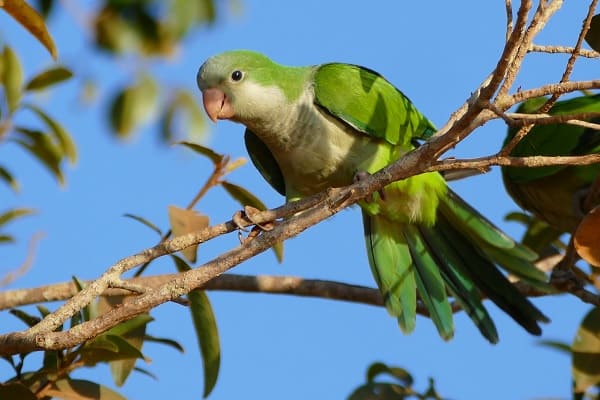
They build big nests in trees or poles, which are home to many families. This shows how smart they are at using what they find.
Monk Parakeets live in big groups, which helps them stay safe and communicate well. It also shows their cleverness and how they connect with each other.
These birds are amazing at living in the city. Watching them can make you appreciate urban wildlife more.
4. Nanday Parakeet
- Scientific Name: Aratinga nenday
- Size: 28–30 cm (11–12 in)
- Weight: 100–150 g (3.5–5.3 oz)
- Lifespan: Up to 20 years in captivity
- Diet: Primarily seeds, fruits, and nuts.
The Nanday Parakeet adds color to Florida’s small green birds. It’s known for its unique traits and social nature. Knowing where they live shows how well they adapt to different places. This makes us appreciate these birds even more.
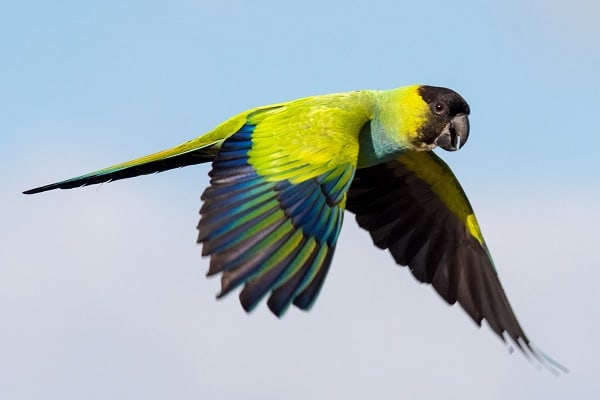
Range and Distribution
The Nanday Parakeet can be found all over Florida. It lives in many places, from city parks to the countryside, and its home depends on food, nesting spots, and weather.
These birds are often seen flying between trees or in big groups. Their ability to adapt has helped their numbers grow in the state.
Social Structure
The Nanday Parakeet is full of energy and fun. They live in big groups, sometimes over fifty birds. Their social life includes grooming and special calls that keep them close.
Watching them shows how they live together. It’s a joy for bird lovers and anyone who enjoys nature.
5. Budgerigar
- Scientific Name: Melopsittacus undulatus
- Size: 18–20 cm (7–8 in)
- Weight: 30–40 g (1.1–1.4 oz)
- Lifespan: Up to 10 years in captivity
- Diet: Primarily seeds, fruits, and vegetables.
The Budgerigar, or budgie, is a favourite pet bird around the world. They are known for their fun nature and bright colours. Knowing about their colours and care needs helps keep them healthy and happy.
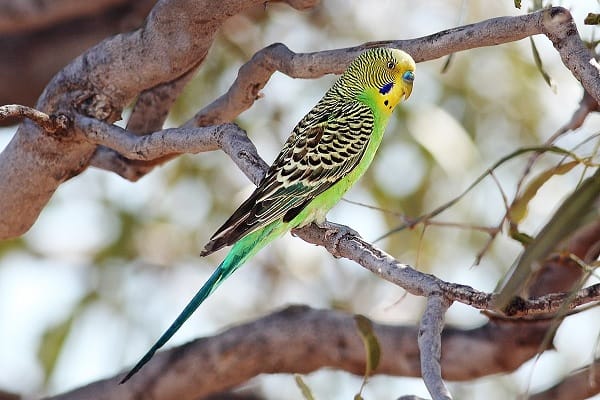
Variations in Color
Budgerigars come in many colours, not just green. You might see:
- Blue
- Yellow
- Gray
- White
- Albino
These colors come from careful breeding. This lets you pick a budgie that looks great to you.
Care and Diet
It’s important to care for your Budgerigar well. Here are key things to remember:
| Care Aspect | Details |
|---|---|
| Housing | A big cage with room to move and safe perches is best. |
| Social Interaction | Spending time with them every day is important. Budgerigars love company. |
| Diet | They need a mix of good pellets, fresh fruits, and veggies for health. |
| Grooming | Keeping their feathers and beaks clean makes them comfortable. |
By taking good care of them and feeding them right, you can enjoy Budgerigar’s lively spirit. This ensures their happiness and health as a beloved pet.
Other Notable Small Green Birds in Florida
Exploring birdwatching in Florida, you’ll find many small green birds. Each one is special and makes birdwatching more fun.
The Olive-sided Flycatcher is a standout. It has olive green feathers and a unique call. You’ll hear it in wooded areas. The Vermilion Flycatcher is mostly red but has greenish tints. These colours make it stand out.
Another bird to see is the pine warbler. It lives in Florida’s pine forests and sings beautiful songs. Its green feathers blend well with the forest, making it a great find.
Don’t miss the Black-throated Green Warbler. It’s small but has bright yellow and green feathers. These colours shine during the breeding season.
Meeting these birds deepens your love for Florida’s wildlife. Keep watching, and you’ll see many colours and behaviours. These small green birds are truly amazing.
How to Attract Small Green Birds to Your Backyard
Make your backyard a lively home for small green birds. A few changes and the right bird feeders can make a big difference. You’ll enjoy watching these birds more than ever.
Best Bird Feeders
Choosing the right bird feeder is key. Here are some great options:
- Platform Feeders: These give birds lots of room to land and eat. They’re perfect for small green birds.
- Tube Feeders: Good for sunflower and safflower seeds, tube feeders attract many small birds.
- Suet Feeders: Suet is high in fat, which small green birds love, especially in cold weather.
What to Offer Them
What you feed birds matters a lot. Here are some tips to make your offerings irresistible:
- Sunflower Seeds: Many birds love these seeds because they’re full of nutrients.
- Safflower Seeds: Though less common, safflower seeds are just as good and attract unique birds.
- Suet Cakes: Suet cakes with fruits and nuts bring in more birds in winter.
To keep your backyard bird-friendly, clean up around feeders often. Also, fill feeders regularly. With the right steps, your backyard will be a hit with small green birds.
Birdwatching Tips: Observing Small Green Birds
Birdwatching can make observing small green birds in Florida more fun. Learning how to birdwatch opens up exciting opportunities. Here are some tips to help you spot these colourful birds.
First, pick the right spot. Small green birds like parks, wetlands, and woodlands. Places with lots of plants are better for finding hidden birds. Also, go out early in the morning or late in the afternoon when birds are most active.
Good binoculars are key for birdwatching. Look for clear and comfortable ones. They let you see the birds’ details and enjoy their beauty.
It’s also important to blend in. Wear quiet colours and move slowly. Being patient is crucial, as birds take their time. Watch and listen for signs of birds nearby.
Learn about small green birds using field guides and apps. Join online birdwatching groups for tips and news. These steps will make your birdwatching fun and educational.
Read More🐦Related Articles:
| Black Birds In Florida |
| Spiritual Meaning of Birds Chirping at 3am |
| Birds in Spain |
| Hawks In Georgia |
| Small Birds with Long Beaks |
Conclusion
In Florida, small green birds add color to the state’s natural beauty. They help make the landscape more beautiful and are key to local ecosystems. Watching these birds through birdwatching connects you to nature, bringing joy and wonder.
Exploring small green birds in Florida helps you appreciate the state’s bird diversity. This is important for keeping nature in balance. It also makes you want to help protect these birds and their homes.
Watching small green birds gives you special moments that grow your love for Florida’s nature. It also helps you support conservation efforts. Every small action you take helps keep these birds and their homes safe for the future.

